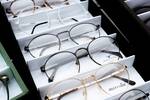
20 Jan Study Finds Near-Sightedness (Myopia) Increases with Education and Greater Close Work
MedicalResearch.com Interview with:

Prof. Rahi
Prof. Jugnoo S Rahi
Professor of Ophthalmic Epidemiology and Honorary Consultant Ophthalmologist
NIHR Senior Investigator
Head, Vision and Eyes Group UCL
HeadPopulation Policy and Practice Research and Teaching Department GOS ICH UCL
Director, Ulverscroft Vision Research Group
GOS Institute of Child Health UCL /
Great Ormond Street Hospital NHS Foundation Trust
Institute of Ophthalmology UCL /
NIHR Moorfields Biomedical Research Centre
Chair, Academic Committee
Chair, British Ophthalmological Surveillance Unit Executive Committee
Royal College of Ophthalmologists
MedicalResearch.com: What is the background for this study?
Response: We hypothesised that if changing environmental factors, in particular educational experience, are accounting for increasing frequency of myopia in the UK, a cohort effect would be discernible in changing associations with myopia, with different profiles for childhood and adult-onset forms. We investigated this using the UK Biobank Study, a unique large contemporary adult population sample whose members, born over a period of more than three decades, have undergone a detailed ophthalmic examination. This affords the opportunity to analyse ‘historical’ cohorts covering a period of important socio-demographic, economic, and educational change in the UK from which current and emerging trends may be identified and examined.
Drawing on our previous proof-of-concept study, we investigated whether there were differences between childhood-onset versus adult-onset myopia in temporal trends in both frequency and severity and in associations with key environmental factors.
MedicalResearch.com: What are the main findings? Is this finding associated with more time on computers or phones and less time outdoors?
Response: Overall myopia frequency increased from 20.0% in the oldest cohort (births 1939-1944) to 29.2% in the youngest (1965-1970), reflecting a relatively higher increase in frequency of adult-onset and low myopia. Childhood-onset myopia peaked in participants born in 1950-54, adult-onset myopia peaked in the cohort born a decade later. The distribution of MSE only shifted for childhood-onset myopia (median: -3.8 [IQR -2.4, -5.4] to -4.4 [IQR -3.0, -6.2]). The magnitude of the association between higher educational attainment (proxy for educational intensity) and myopia overall increased over time (adjusted Odds Ratio (OR) 2.7 [2.5, 2.9] in the oldest versus 4.2 [3.3, 5.2] in the youngest cohort), being substantially greater for childhood-onset myopia (OR 3.3 [2.8, 4.0] to 8.0 [4.2, 13]). Without delineating childhood-onset from adult-onset myopia, important temporal trends would have been obscured.
What we found is an association with educational ‘intensity’ ie visually demanding near work activities which for the oldest cohorts in the study would not have been computer use or phone use. What we know about the changing patterns of education in childhood is that children have ended up spending more time with more intensive near work in their education and separately over time children have spent less time on distance viewing activities outdoors .
MedicalResearch.com: What should readers take away from your report?
Response: That there are a number of environmental factors that can influence risk of myopia. Our study shows that the changing landscape with respect to education in the UK – starting with an increased from minimum school a leaving age from 14 to 16 years and then a steady increase in the numbers of people going on into higher and further education – has been associated with an increase in the number of people developing myopia in the UK which started decades ago. Our findings and those from studies of younger populations in parts of the world where the prevalence of myopia is very high for example populations in China, suggest that if we don’t address this risk factor for myopia, we will continue to see more people becoming myopic. And especially that more people will become severely myopic and therefore develop blinding complications.
We need to develop strategies that can counterbalance the adverse impact of high educational levels of near work to achieve a better balance between how much time people, in particular children, spend on near viewing (phones, laptops/computers) work and how much time they spend on distance viewing which is most readily achieved by being outdoors. This would be in keeping with trends in child health generally as there is greater understanding of the impact on other aspects of health and well-being of reduced outdoor activities and increased screen time.
MedicalResearch.com: What recommendations do you have for future research as a result of this work?
Response: We intentionally analysed childhood-onset and adult-onset myopia separately and our findings show that unless this is done, important associations and in particular temporal trends can be obscured. We also intentionally used the myopia status of individuals once they were in mid adult life – as we know the myopia can start for the first time in early adult hood and recent research shows that it can continue to develop or progress into the third decade of life. So for example a child at 15 years of age might not be classed as being myopic but may go on to develop adult onset myopia and therefore would have been misclassified in a study that investigated only children . We think it’s really important to recognise that in myopia research there’s always the risk of introducing an error if ‘final’ myopia status is investigated measured. Finally we deliberately used a conservative threshold of -1.00 for defining myopia – as our previous work as shown that using a threshold of -0.5 or -0.75 will lead to errors in analysis with associations changing with changing thresholds – and we think it’s important that future research pays close attention to the definitions of myopia used and the impact that has on the findings.
No disclosures – we thank our collaborators and the funders of the study, as listed in the paper.
Citation:
Phillippa M. Cumberland, Vasiliki Bountziouka, Christopher J. Hammond, Pirro G. Hysi, Jugnoo S. Rahi. Temporal trends in frequency, type and severity of myopia and associations with key environmental risk factors in the UK: Findings from the UK Biobank Study. PLOS ONE, 2022; 17 (1): e0260993 DOI: 10.1371/journal.pone.0260993
[wysija_form id=”3″]
[last-modified]
The information on MedicalResearch.com is provided for educational purposes only, and is in no way intended to diagnose, cure, or treat any medical or other condition. Always seek the advice of your physician or other qualified health and ask your doctor any questions you may have regarding a medical condition. In addition to all other limitations and disclaimers in this agreement, service provider and its third party providers disclaim any liability or loss in connection with the content provided on this website.
Last Updated on January 20, 2022 by Marie Benz MD FAAD
